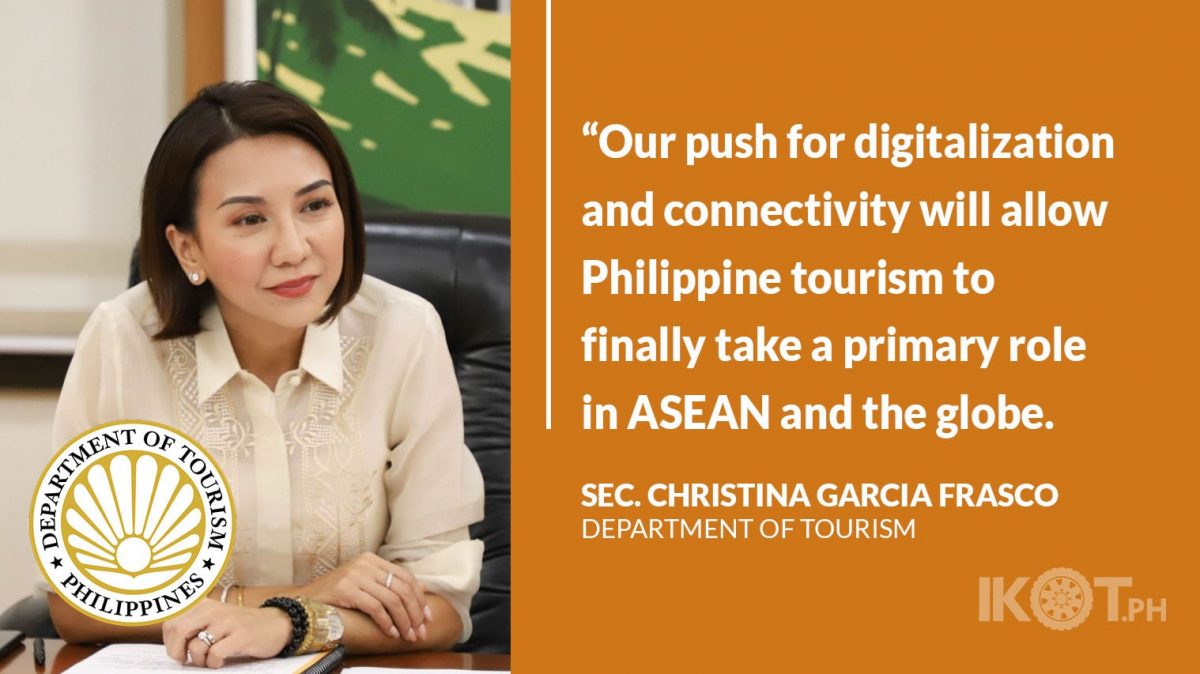The Department of Tourism (DOT) has formally signed a partnership with the Department of Information and Communications Technology (DICT) in a bid to introduce and further improve internet connectivity in 94 identified tourist destinations across the country, and digitalize tourism services nationwide.
The ceremonial signing of the Memorandum of Understanding (MOU) was held at the DOT office led by the heads of the two departments, Secretary Christina Garcia Frasco and Secretary Ivan John Uy, and witnessed by their respective undersecretaries and other key officials.
Frasco said this partnership with the DICT is part of the fulfillment of the President’s vision for tourism to become a pillar for economic development as the Department is pursuing, at the same time, the recovery of the pandemic-hit sector.
“Our push for digitalization and connectivity will allow Philippine tourism to finally take a primary role in ASEAN and the globe. This will propel us to even greater numbers than we have already achieved thus far,” the tourism chief said, pertaining to the new achievements the DOT has made wherein international tourist arrivals pegged at 1.7 million for 2022 have already reached 2.4 million before year end.
According to the tourism head, the DOT has identified 94 tourist destinations which will be part of the project.
Aside from the tourist-magnets Boracay, Palawan, Cebu, Bohol, and Siargao, emerging and lesser-known destinations will be their priority.
“It will also allow even the most far-flung tourist destinations and local government units opportunities to be heralded to the world as a viable tourism destination.”
“This itself fulfills another objective under the Marcos administration for tourism and that is to equalize tourism promotion and development because not only will it give opportunities for key destinations to continue to open for development, but also allow even the most far-flung tourist destinations and local government units opportunities to be heralded to the world as a viable tourism destination,” she stressed.
The information technology chief expressed his admiration for Frasco, whom he referred to as the “conglomeration of all that is amazing in tourism” with her political will to introduce wonderful interventions in the industry in the last six months.
“Some are really just common sense but took some time to implement for others but for her, political-will was there and she’s able to deliver it very, very quickly and directly, and to many and others it’s out-of-the-box thinking using imagination, using creativity in order to be able to introduce all of these wonderful interventions in our tourism sector,” the information technology head said.
He stressed that the partnership project will also look at the proper connectivity intervention per destination, whether fiber optics or satellites will be installed, as well as the security of the equipment.
“From the DICT perspective, we want to help all of the departments, all of the departments to be utilized, get the services out in a more effective, more efficient, less redundant manner,” Uy said.
“The collaboration is part of the DOT’s goal to fully digitize all manners of tourist transactions and integrate them into one system to further entice tourists, both foreign and local, to tour around the country seamlessly.”
Frasco noted that the collaboration was part of the DOT’s goal to fully digitize all manners of tourist transactions and integrate them into one system to further entice tourists, both foreign and local, to tour around the country seamlessly.
She also believes that having an improved internet connectivity will further boost the gains of the tourism sector that has contributed greatly to the country’s Gross Domestic Product over the years next to trade.
“Truly, there is no innovative tourism program that does not involve internet communications technology and that is why this convergence expands through many aspects of tourism development,” Frasco concluded.


